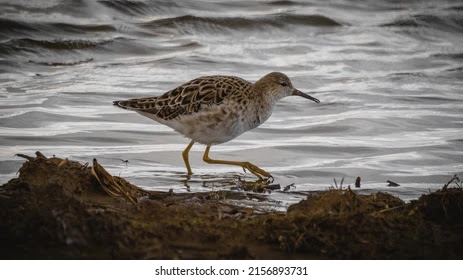Interesting facts about turukhtans.
Are you familiar with the Turukhtans?
We wanted to see birds with such a funny name for a long time. And not just to see, but to find males in mating attire.
In general, of course, during the mating season, almost all birds are transformed, "putting on" their most beautiful outfits. But the Turukhtans outperformed everyone here, in my opinion!
Read also: Saker falcon. A bird hunted by Arab sheikhs
To admire the birds, we went to a small poloozero-poluboloto in the village of Zapolyarny, near Nikel (Murmansk region). There, for several years now, Turukhtans have been going to Tokovishche. At the same time, they are not afraid of people at all and even resort, like ducks, for pieces of bread, which they are generously fed by local residents.
INTERESTING FACTS ABOUT TURUKHTANS
It is believed that the Russian name of the bird came from the eastern "kurukhtan", meaning"a bird similar to a chicken". If you watch the dancing turukhtans, they are very similar in behavior to cocky roosters. This is also emphasized by the Latin name Philomachus pugnax, which literally translates as "warlike lover of fights"During the year, the turukhtan is a nondescript bird, and only during the mating season do males change dramatically. They have a brightly colored feather collar and peculiar "ears" on their heads. At the moment of excitement, all this wealth fluffs up and the bird becomes like some kind of unearthly creature.
During the mating season, even in a large pack, it is impossible to meet two equally colored males.
In winter, both males and females have the same nondescript gray-brown color with a white bottom.
Turukhtans shed their gorgeous plumage in July and molt lasts until September-October.
Male turukhtans are of two types - common and federa. Males of federa do not grow mating clothes and do not participate in fights, but are present on the tokovishche. Externally, it is impossible to distinguish a feder from a female. The only difference is that they are slightly larger than the average female turukhtan. However, it is observed that females present on the current. feder is often chosen for mating.
Feder males have another feature. Common males often mate with these males, despite the fact that they can recognize that feder belongs to the male sex. This type of male. mimicking the appearance and behavior of females was described not so long ago, in 2006, and so far this is the only case of such non-standard behavior among birds.
Feder translates as "forefather" and ornithologists believe that this is exactly what male turukhtans looked like before genetic changes occurred and the birds had the same mating outfit that we can now observe. On average, feders make up about 1% of the total population of sats-turukhtans.
Common males are also divided into dominants and companions or satellites. Satellites differ in that they have a white collar and a calm character. Aggressive dominants have colored collars and all skirmishes occur between them. It is noted that the brighter the color of the collar, the more aggressive the male.
Read also: Birds that haven't touched the ground for years
Turukhtans winter in Central and Southern Africa.Males are the first to fly to their wintering grounds, and they are the first to return to their nesting sites.
Read also: Birds that haven't touched the ground for years
Turukhtans do not form a pair. A female can mate with several males at once, which is often used by male companions. While the dominants are fighting, they manage to cover the females.
Despite the apparent aggressiveness, males do not cause any injuries to their rivals in battles. The main purpose of the Turukhtan battle is to win back the main place on the tokovishche, which can be some kind of elevation or hummock.
Males come to the same place of current from year to year. The more males on the current, the more females look in there.
Having chosen a male, the turukhtanya female begins to rub against his collar or gently tap the top of his head with her beak.
The female turukhtan incubates and grows her offspring independently.Males do not take any part in this.
Turukhtans are silent birds, you can only hear their soft voice during the current or at the nest with the brood.
Turukhtans choose swamps for nesting. wet meadows and wet tundra.
You can see turukhtans in the northern latitudes of Eurasia from Scandinavia to Kolyma. According to estimates of ornithologists, the largest population of these birds, about 2 million individuals, is observed on the territory of Russia. The highest density of breeding grounds occurs in the Russian North, up to the Sea of Okhotsk, Chukotka and Kolyma.
Turukhtans winter in Central and Southern Africa.Males are the first to fly to their wintering grounds, and they are the first to return to their nesting sites.


Post a Comment